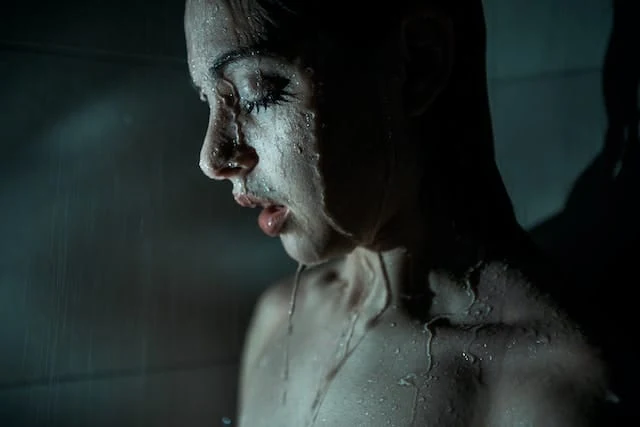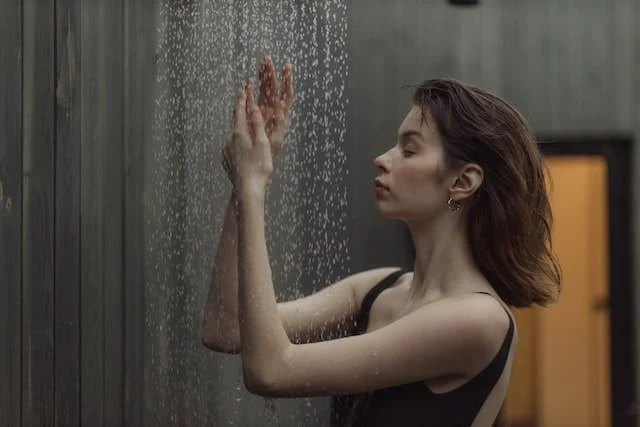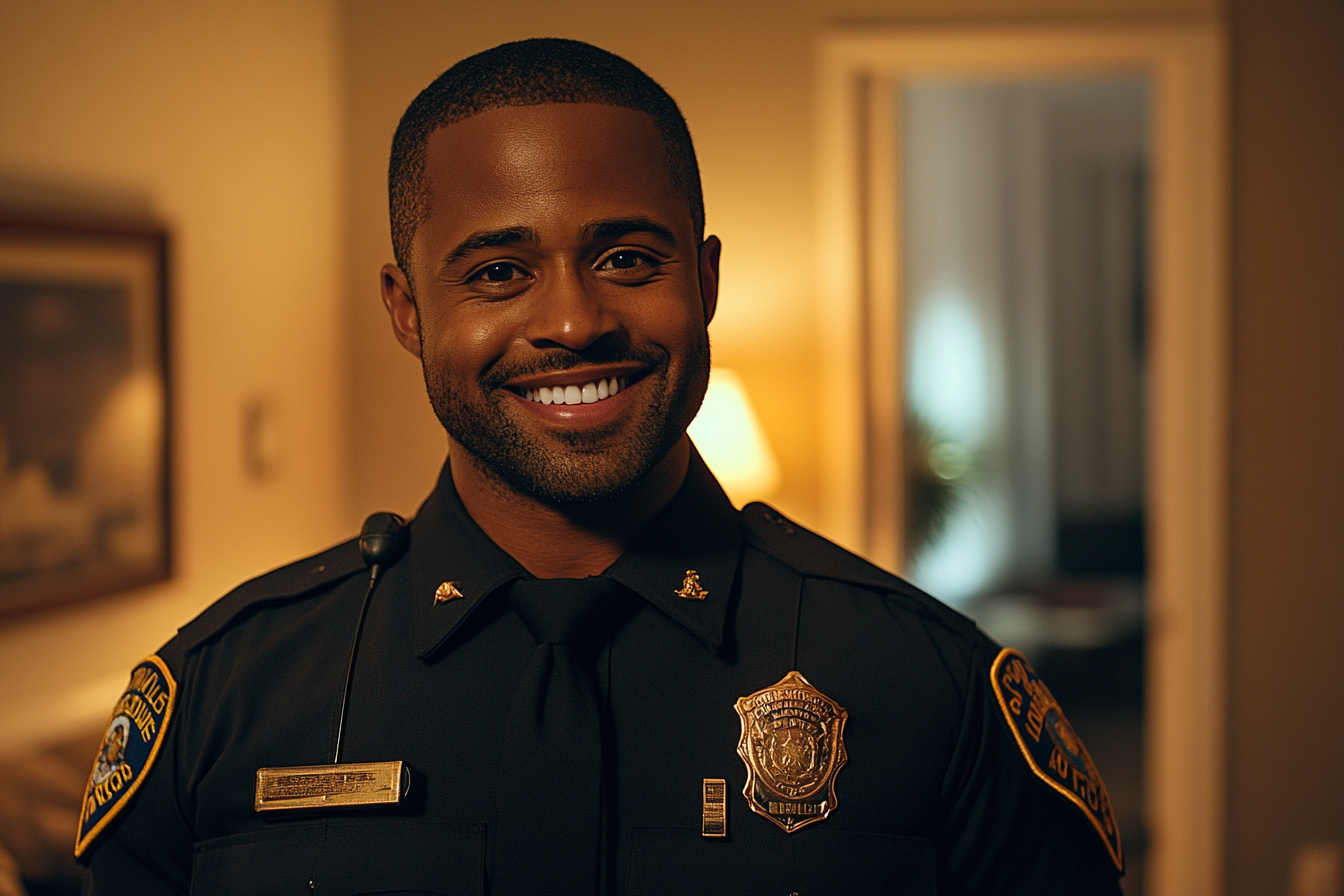The debate over peeing in the shower continues, with many advocating for the practice due to its water-saving benefits. However, Dr. Alicia Jeffrey-Thomas, a pelvic health specialist, warns that for those assigned female at birth, this habit could have unintended health consequences.
The Water Conservation Argument

One of the strongest arguments for urinating in the shower is its potential to save water. By eliminating the need for a separate toilet flush, a person could save approximately 2,190 liters (579 gallons) of water per year. If the entire U.S. population adopted this practice, it could lead to an annual water savings of 699 billion liters (185 billion gallons). This significant reduction in water consumption highlights the environmental advantages of shower urination.
Potential Health Risks: The Pelvic Floor Connection
Despite the environmental benefits, the potential health consequences of this habit must be considered. Dr. Jeffrey-Thomas explains in a TikTok video that regularly peeing in the shower may lead to pelvic floor and bladder control issues.
The Pavlovian Response
Dr. Jeffrey-Thomas likens this habit to Pavlov’s classical conditioning experiment, where dogs learned to associate the sound of a bell with food. Similarly, repeatedly urinating in the shower can train the brain to link the sound of running water with the urge to pee. This association may result in involuntary urination triggered by running water sounds, such as a faucet, toilet flush, or even rain.

Pelvic Floor Dysfunction Risks
For individuals with existing pelvic floor dysfunction, this learned association can exacerbate bladder control problems. Dr. Jeffrey-Thomas explains that urinating while standing in the shower does not allow the pelvic floor muscles to fully relax, potentially leading to incomplete bladder emptying. Over time, this can contribute to urinary retention and increase the risk of urinary tract infections (UTIs).
Some argue that squatting while urinating in the shower might alleviate pelvic floor strain. Dr. Jeffrey-Thomas acknowledges that a full squat position allows for better pelvic floor relaxation, but she still advises against making shower urination a habit. If one must urinate in the shower, a proper squatting position is preferable to standing.
Why Doesn’t Toilet Flushing Trigger the Same Response?

A common question is why flushing the toilet doesn’t condition the brain in the same way. Dr. Jeffrey-Thomas clarifies that by the time a person flushes the toilet, they have already urinated, so no association is formed. However, individuals who struggle to resist the urge to urinate when exposed to running water may already have underlying bladder control issues.
Understanding Pelvic Floor Dysfunction

Pelvic floor dysfunction is a common condition, particularly among women. The pelvic floor is a group of muscles that support the bladder, uterus, rectum, and other organs. Dysfunction occurs when these muscles become too weak or too tight, leading to symptoms such as:
- Urinary and bowel incontinence
- Lower back pain
- Pain during intercourse
- Increased urgency or frequency of urination

Factors such as childbirth, surgery, aging, obesity, and high-impact activities can contribute to pelvic floor dysfunction. Given that urinating in the shower might worsen symptoms, individuals should be aware of these risks before adopting the habit.
The Biological Factor: Why Female Anatomy Matters
Dr. Jeffrey-Thomas emphasizes that those with female anatomy are not designed to urinate while standing. Unlike male anatomy, where the positioning allows for better bladder emptying while standing, females may struggle to fully relax the pelvic floor in this position. This can lead to incomplete bladder emptying, increasing the risk of UTIs and other urinary complications.
Pros and Cons of Peeing in the Shower

Pros:
- Water conservation: Reduces toilet water usage significantly.
- Convenience: Saves time, particularly during a rushed morning routine.

Cons:
- Pelvic floor health risks: May contribute to bladder control issues and pelvic dysfunction.
- Conditioned response: Can create an involuntary urge to urinate when exposed to running water.
- Sanitation concerns: While urine is mostly sterile, it can still contain bacteria that may pose hygiene risks.

The Bottom Line
While peeing in the shower may seem like an eco-friendly and convenient habit, it is important to weigh the potential health risks. Dr. Alicia Jeffrey-Thomas’s insights serve as a reminder to consider the long-term effects of our daily routines. Striving for sustainability should not come at the cost of personal health. Ultimately, making an informed decision based on both environmental and health factors is key to maintaining overall well-being.
Meu filho trouxe a noiva para casa – Assim que vi o rosto dela e soube o nome dela, chamei imediatamente a polícia

Quando meu filho trouxe a noiva para casa, fiquei emocionado ao conhecer a mulher que havia roubado seu coração. Mas assim que vi seu rosto, minha excitação desapareceu. Eu já a conhecia e logo a mandei trancar no meu porão.
O desejo de proteger seu filho nunca desaparece. Sou uma mãe de 50 anos que mora em um bairro suburbano tranquilo com meu marido, Nathan. Estamos casados há mais de 25 anos e temos um filho, Xavier, que é a luz das nossas vidas.

Um casal com seu filho | Fonte: Meio da Jornada
Ele está agora com 22 anos e prestes a deixar a universidade. Embora ele tenha se mudado há anos, ainda somos uma família muito unida. Pelo menos foi o que pensei até algumas semanas atrás, quando Xavier nos surpreendeu com um telefonema.
Era uma tarde normal de terça-feira. Nathan e eu estávamos na sala, meio assistindo TV e meio cochilando, quando o telefone tocou.
“Mãe, pai, tenho ótimas notícias!” Xavier exclamou no final da linha. “Eu conheci uma pessoa. O nome dela é Danielle e ela é incrível. Estamos namorando há três meses e…” Ele fez uma pausa dramática. “Eu a pedi em casamento e ela disse que sim!”

Um homem propõe casamento | Fonte: Meio da Jornada
Eu não consegui falar por um segundo. Havia muito para processar. Mulheres. Três meses. Proposta? “Espere, você está noivo?” perguntei, olhando para meu marido, que estava com o queixo praticamente no chão.
“Sim! Eu queria te contar antes, mas Danielle é muito tímida. Ela não estava disposta a te conhecer até agora, mas eu a convenci. Podemos jantar neste fim de semana?”
“Claro!” eu disse, embora preocupações e um pouco de excitação já estivessem passando pela minha mente.

Uma mulher ao telefone com olhos surpresos | Fonte: Meio da Jornada
Xavier não mencionou nenhuma namorada durante seus quatro anos de universidade. Sem histórias de namoro, sem fotos, nada. Agora ele estava noivo depois de namorar apenas alguns meses! Foi uma loucura.
Depois de desligar, falei com meu marido. “O que sabemos sobre ela?” perguntei a Nathan enquanto arrumávamos a casa para nos prepararmos para o fim de semana. “De onde você é? O que você faz?”
“Querida, você ouviu a mesma coisa que eu”, Nathan sorriu para mim. “Talvez eu esteja simplesmente apaixonado. Você sabe como é o amor jovem.”

Um homem sorrindo | Fonte: Meio da Jornada
Isso não acalmou meus nervos. Tentei ligar para Xavier no dia seguinte para fazer mais perguntas, mas suas respostas foram vagas. “Ele é daqui”, disse ele, e pude ouvir o sorriso em sua voz. “Ela é incrível, mãe. Espere até conhecê-la. Você descobrirá tudo o que precisa saber.”
Com essas palavras, decidi deixar de lado minhas preocupações por enquanto e focar no futuro. Eu tive que me preparar para esse evento importante. Nathan também me lembrou das possíveis vantagens de nosso filho se casar: netos!

Uma foto onírica de duas crianças pequenas | Fonte: Meio da Jornada
Então, quando chegou o grande dia, comecei a trabalhar. Assei um frango, fiz uma torta de cereja e arrumei a mesa com nossa melhor porcelana.
Nathan também gastou uma fortuna em alguns bifes caros. “Isso é caso você prefira carne bovina a frango. As primeiras impressões são importantes, certo?”
“Claro, querido!” eu disse. “Espere, você acha que eu deveria fazer outra sobremesa caso ele não goste de torta de cereja?”
Passamos a manhã inteira assim. Nathan até cortou a grama, embora eu não tivesse ideia de como isso ajudaria. Mas isso nos deixou ainda mais entusiasmados.

Um homem com cortador de grama | Fonte: Meio da Jornada
Quando a campainha tocou, não conseguimos conter o sorriso. Devíamos parecer duas pessoas num filme de terror, porque Xavier deu um passo para trás assim que abrimos a porta.
“Bem-vindo!” eu disse, quase gritando.
Xavier sorriu timidamente e nos apresentou a Danielle, que estava timidamente ao lado dele, ombros curvados e um pequeno sorriso.

Um casal em uma varanda | Fonte: Meio da Jornada
Ela era pequena, com cabelos escuros e olhos grandes. Lindo mesmo, e ficou bem ao lado do meu filho. Mas o rosto dele… levei apenas um segundo para reconhecê-lo.
Mesmo assim, sorri ao recebê-los, mas entrei em pânico por um motivo muito válido.
Há apenas alguns meses, minha amiga Margaret me mostrou a foto de uma mulher que havia enganado seu filho. Ele se apaixonou por essa mulher, que o convenceu a comprar para ela um caro anel de noivado e a dar-lhe milhares de dólares para “despesas de casamento”.

Anel de noivado | Fonte: Meio da Jornada
Então, ele desapareceu sem deixar vestígios. Margaret ficou arrasada e compartilhou a foto com todos que conhecia, esperando que alguém reconhecesse o golpista. E agora, aqui estava eu, parado na minha sala de estar.
Seu cabelo era de uma cor diferente, muito mais escuro, e ele poderia estar usando lentes de contato azuis, mas reconheci aquele rosto. E o que aconteceu a seguir foi um borrão.
De alguma forma, nos sentamos. Servi o jantar e todos conversaram animadamente. Até respondi quando pude. Mas eu não conseguia parar de olhar para Danielle. Também verifiquei discretamente meu telefone, tentando encontrar a foto que Margaret havia enviado. Eu deveria ter deletado.

Uma mesa de jantar cheia de comida | Fonte: Meio da Jornada
Eu teria que ligar para ela mais tarde. De repente, Nathan tossiu. Ele percebeu minha distração e me pediu para ajudá-lo na cozinha.
“O que há de errado, Evangeline?” ele sussurrou quando ficamos sozinhos.
“É ela”, eu disse com urgência. “O golpista de quem Margaret nos contou. Tenho certeza.”
“O quê? Aquela que partiu o coração do filho e roubou tudo dele?” Nathan franziu a testa, com as mãos nos quadris. “Tem certeza? Pode ser alguém parecido com ela.”

Um homem com cara de preocupado | Fonte: Meio da Jornada
“Estou lhe dizendo, Nathan, é ela”, insisti. “Margaret compartilhou essa foto em todos os lugares que pôde durante meses depois de seu desaparecimento. Tenho que fazer algo antes que ela machuque Xavier também.”
Nathan suspirou, mas não discutiu. “Apenas… tenha cuidado. Não vamos acusar ninguém sem provas.”
Quando o jantar terminou, ele elaborou um plano e o colocou em ação. “Danielle, você pode me ajudar a escolher um vinho da adega?”, perguntei, tentando manter a voz firme.

Uma mulher em uma mesa sorrindo sem jeito | Fonte: Meio da Jornada
Ele hesitou, mas assentiu. “Claro”, disse ele, levantando-se.
Eu a levei escada abaixo, tentando ser o mais casual possível. Felizmente, ela era tímida o suficiente para que a conversa não fosse tão importante. Mas assim que ela entrou no porão mal iluminado, me virei e fechei a porta atrás dela.
Minhas mãos tremiam enquanto corria escada acima. “Nathan, chame a polícia. Agora mesmo.”
Xavier levantou-se da cadeira com as sobrancelhas franzidas. “Mãe, o que você está fazendo?”, ele exigiu.

Um jovem confuso | Fonte: Meio da Jornada
“Essa mulher não é quem diz ser”, eu disse com firmeza. “Ele já enganou pessoas antes. Estou protegendo você.”
Xavier parecia ter levado um tapa. “O quê? Não! Você está errado! Danielle não é uma golpista. Ela é gentil, honesta e é minha noiva.”
Eu o ignorei, liguei para Margaret e expliquei a situação. “Mande-me aquela foto do golpista”, implorei ao meu amigo e desliguei. Segundos depois, meu telefone vibrou com a imagem. Foi ela. Eu não tive dúvidas.

Uma mulher com cabelos loiros | Fonte: Meio da Jornada
Virei o telefone para meu filho e marido. “Viu? Eu não sou louco!”
Felizmente, a polícia chegou pouco depois e confirmou que ela não estava louca. Eu estava errado.
Xavier desceu para deixar Danielle sair do porão. E, por algum motivo, ela não estava com medo. Fiquei frustrado, mas… divertido.

Uma mulher com um leve sorriso | Fonte: Meio da Jornada
Ele se virou para nós com um suspiro. “Não é a primeira vez que alguém me confunde com aquela mulher”, disse ele. “Eu sei exatamente de quem eles estão falando. Ela arruinou minha vida, ou quase. Já me levaram para a delegacia antes e eu vi a foto dela. Ela é loira de olhos castanhos; meu cabelo é preto e meus olhos azuis são naturais. Eu não sou ela”.
Um dos agentes olhou para ela com atenção e depois assentiu. “Lembro-me deste caso. A verdadeira golpista usou o nome Danielle e evitou a polícia por muito tempo. Acho que ela até conseguiu enganar outra pessoa antes de ser pega. Ela está na prisão há muito tempo. Posso confirmar isso esta senhora não é. É ela.

Um policial sorrindo | Fonte: Meio da Jornada
Fiquei sem palavras. Fiquei aliviado, mas ao mesmo tempo muito envergonhado. Por que Margaret não sabia? “Oh meu Deus! Eu… sinto muito”, gaguejei.
Para minha surpresa, Danielle sorriu e depois deu uma risadinha. “Bem, foi uma maneira interessante de conhecer meus futuros sogros”, brincou ele. “Pelo menos eu pude escolher um vinho.” E também tinha bom gosto, porque a garrafa que escolheu era uma das mais caras.
Suas palavras me fizeram rir e a tensão foi facilmente quebrada.
Xavier a abraçou, claramente aliviado e apaixonado. “Eu disse que ela não era assim”, ele disse, me lançando um olhar penetrante.

Um casal se abraçando | Fonte: Meio da Jornada
Aquela noite terminou com desculpas e um novo começo. Com o tempo, conheci Danielle e vi o quanto ela amava Xavier de verdade. Ela era amorosa, divertida e uma confeiteira incrivelmente talentosa que até fez seu próprio bolo de casamento.
Quanto a mim, aprendi uma lição sobre tirar conclusões precipitadas. Embora continue protetor com Xavier, estou aprendendo a confiar em suas decisões. E agora temos uma história de família que nunca esqueceremos, embora duvide que Danielle me deixe aproveitá-la tão cedo.

Uma mulher envergonhada | Fonte: Meio da Jornada
Aqui está outra história : quando o melhor amigo da minha noiva finalmente nos visitou, pensei que só ouviria histórias embaraçosas sobre o passado de Sarah. Em vez disso, seu comentário casual sobre a “coisa do cabelo” dela revelou um segredo doloroso que ela estava escondendo.
Este trabalho é inspirado em eventos e pessoas reais, mas foi ficcionalizado para fins criativos. Nomes, personagens e detalhes foram alterados para proteger a privacidade e melhorar a narrativa. Qualquer semelhança com pessoas reais, vivas ou mortas, ou com acontecimentos reais é mera coincidência e não é intenção do autor.
O autor e a editora não garantem a exatidão dos acontecimentos ou a representação dos personagens e não são responsáveis por qualquer má interpretação. Esta história é fornecida “como está” e as opiniões expressas são dos personagens e não refletem as opiniões do autor ou editor.
Diga-nos o que você pensa nos comentários do Facebook e compartilhe essa história com seus amigos. Isso poderia iluminar o dia deles e inspirá-los.



Leave a Reply